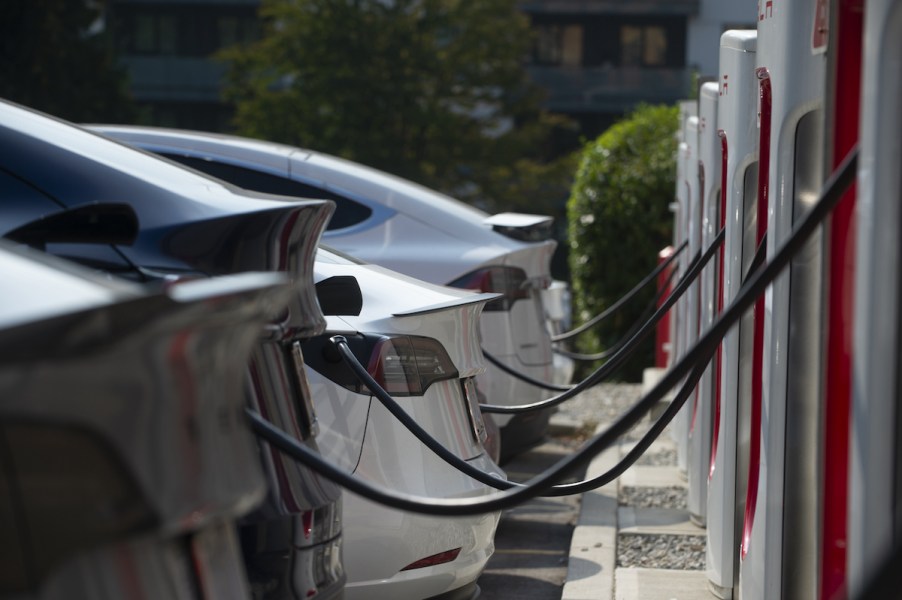
Is It Safe to Use Level 3 Charging for a Plug-in Hybrid Electric Vehicle (PHEV)?
There is more to understand about owning an electric vehicle than you might think. Charging these new electric cars involves three different levels of charging. The infrastructure trifecta of charging also features DC Fast Charging (Level 3) which allows EVs to recharge 100s of miles worth of electricity in minutes. But what about plug-in hybrid electric vehicles (PHEVs)?
Can today’s PHEVs use the Level 3, DC Fast Charging just like the other fully electric vehicles? And more importantly, is it safe to do so? We dove in further to find the answers so you can make the right EV or PHEV-buying decision.

What are plug-in hybrids, and how do they charge?
Plug-in hybrid vehicles are not EV equivalents. There are several components in the engineering and powertrain that operate similarly to EVs. As the AFDC describes, PHEVs come equipped with batteries responsible for starting the car, traction, and powering the accessories.
There is also a charging port for PHEV owners to plug in their vehicles, allowing an external power supply to recharge the battery pack. However, PHEVs aren’t entirely reliant on electricity like EVs. PHEVs also come with a gas tank and combustion engine, capable of engaging for additional power should the batteries run low or fail to recharge.
Charging your PHEV is fairly simple. You use a dedicated power cable to connect your vehicle to an external power source, much like you would plug in any other electronic device. Additionally, the EPA outlines PHEV charging conditions and key factors that affect how the batteries are charged.
How quickly your PHEV charges can be impacted by how much of the battery’s energy is depleted, the battery’s charging capacity, as well as environmental temperatures. But there’s even more to know about charging your PHEV.
Plug-in hybrids can’t do fast charging
Before you go plugging in your PHEV, it’s best to first understand the three levels of charging infrastructure. The U.S. Department of Transportation outlines the distinctions as:
Level 1: The common residential 120-volt AC outlet, capable of charging the average PHEV from depletion to full charge in roughly five or six hours.
Level 2: The next quickest form of charging that uses a 240-volt application, often found in residences, workplaces, and public use stations. This level can charge a PHEV from depletion to full charge in one to two hours.
Level 3: The fastest charging mechanism, called Direct Current Fast Charging, enables rapid charging at specified DC charging stations. EVs can be recharged to 80% in under an hour. However, PHEVs are not compatible.
Take note of that third level of charging – PHEVs are not compatible with DC Fast Chargers. In fact, the batteries powering a PHEV aren’t designed to accommodate Level 3 charging since they’re only capable of roughly 10% charging capability of a fully-electric vehicle.
How Level 3 and DC Fast Charging works for EVs
When you see DC Fast Charging stations along major highways, know the science behind how they charge a vehicle is different from the residential Levels 1 and 3 stations you might have at home.
EV Safe Charge says these Level 3 stations are essential for high mileage, EV fleets, and long-distance driving, offering rapid charging. But what allows them to be so quick is what makes them different and often incompatible with older EVs and all PHEVs. DC Fast Chargers bypass any onboard limitations and conversion mechanisms on the vehicle, surging DC current directly to the battery.
This direct current to the EV’s battery translates to much faster charging times. The other levels of charging instead use AC currents, converting to DC power by the vehicle. And if you have a DC-compatible EV, it’s imperative to also read your vehicle’s manual.
Some suggest routine DC charging can have a negative impact on your battery over time, affecting its performance and durability. So, even if you can safely use a DC Charging Station, it’s best to minimize its usage whenever possible.
So, if you’re opting for the PHEV, know you will only be able to charge it using Level 1 or Level 2 AC-based charging stations.


